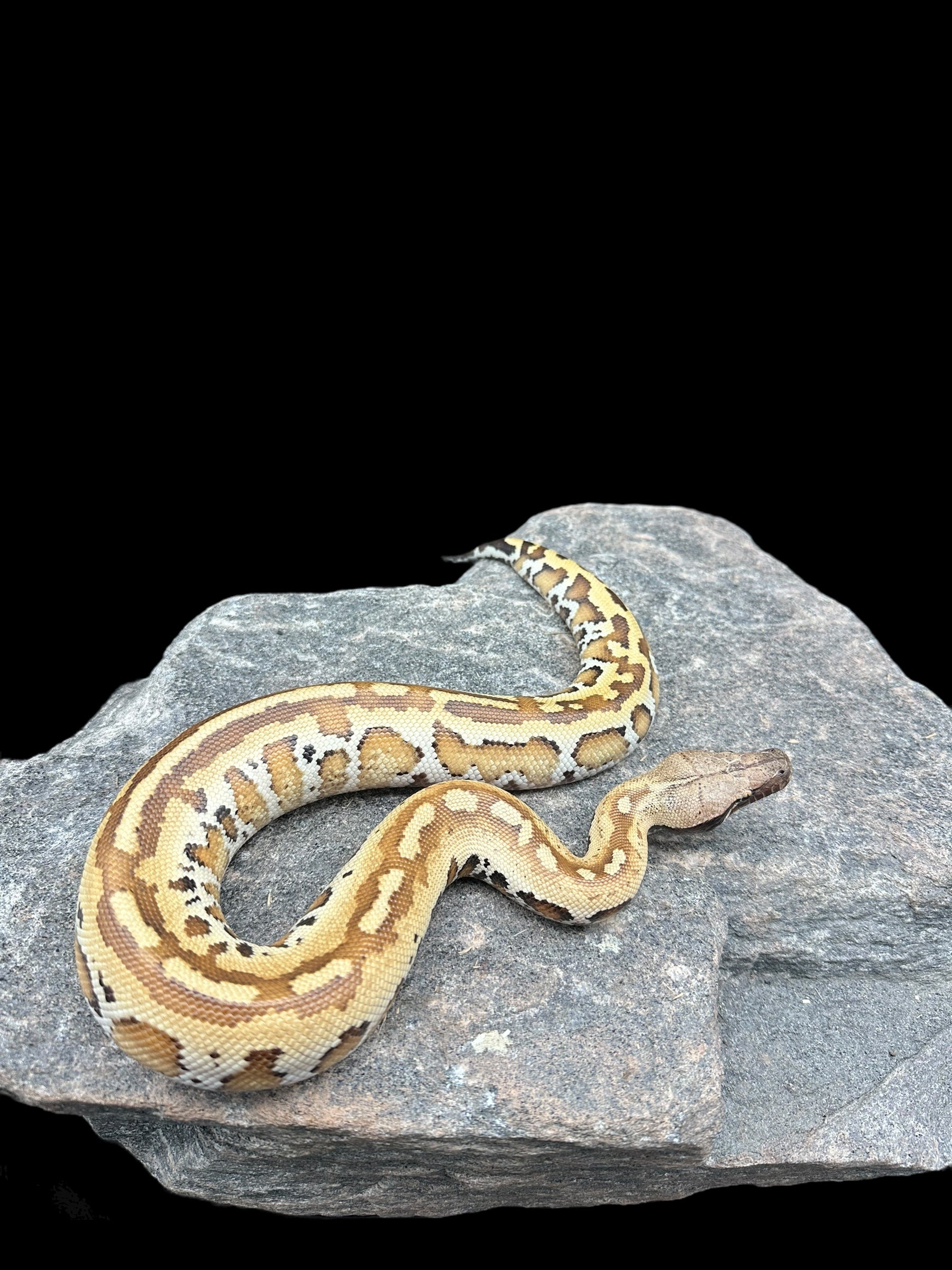Photo Disclaimer
Description
Blood Python (Matrix Het T- Albino)
Python brongersmai
Common Names: Blood Python, Brongersmai Python
(Matrix = co-dominant morph; T- = Tyrosinase-Negative Albino, recessive morph, het form carried)
Species Overview
-
Size: Adults typically grow 4–6 feet (1.2–1.8 m), with females generally heavier-bodied. Rare individuals may exceed 7 feet.
-
Appearance:
-
Matrix (co-dominant – visual): Produces a broken, irregular pattern compared to normal Blood Pythons. The sides often feature reduced blotches and “flame-like” markings, creating a chaotic and diffused appearance.
-
T- Albino (recessive – het form): This animal carries one copy of the T- gene. T- Albinos, when visual, display bright whites, yellows, and oranges, with melanin completely removed for a high-contrast appearance.
-
The Matrix Het T- Albino visually shows the Matrix pattern while holding genetic potential for producing striking Matrix T- Albinos in breeding projects.
-
-
Distribution: Native to Peninsular Malaysia, Sumatra, and surrounding islands.
-
Habitat: Found in swamps, marshes, and humid lowland forests, often sheltering in dense ground cover.
-
Behaviour: A terrestrial ambush predator, preying mainly on rodents and birds, relying on stealth and explosive power.
Captive Care
-
Enclosure: Adults thrive in enclosures around 4 ft × 2 ft × 1.5–2 ft, with emphasis on floor space. Provide a snug hide, deep humidity-retentive substrate, and a large water dish for soaking.
-
Temperature & Humidity: Keep basking areas at 86–88°F (30–31°C) and a cooler side around 78–80°F (25–27°C). Maintain humidity at 60–70%, with spikes to 80% during shedding.
-
Diet: Juveniles feed on hopper rats or similar prey every 5–7 days; adults typically consume medium to large rats every 10–14 days. Avoid overfeeding, as Blood Pythons are prone to obesity.
-
Behaviour in Captivity: Captive-bred Matrix animals are generally hardy and consistent, though they can be defensive when startled and strongly food-motivated. With proper husbandry and patient handling, they adapt well to captivity.
-
Special Considerations: These snakes thrive in naturalistic setups with deep, moisture-retentive substrate that supports burrowing behaviour and hydration.
Genetics Note
-
Matrix (Co-Dominant – Visual): Breaks up and reduces normal patterning, giving a chaotic, flame-like appearance.
-
Super Matrix (Homozygous): Produces the Ivory, a pale, reduced-pattern snake that forms the basis of several important combos.
-
T- Albino (Recessive – Het Form): Carried as one copy here. When paired with another het or visual, this animal can produce Matrix T- Albino offspring, combining the fragmented Matrix pattern with the high-contrast, melanin-free colours of T- Albino.
The Blood Python (Matrix Het T- Albino) is both a visually distinct morph in its Matrix expression and a valuable project animal, capable of producing some of the most striking high-contrast albino combinations in the species.

